A New/Old Trend
Movement is fascinating for children. It is always exciting and engaging to bounce, jump, spin, swing, or see-saw.
This is the reason children, and even adults, have so much fun on rope-based play equipment. Rope is not dead material. Instead, it is flexible and enables a child to ‘connect’ with the equipment, as a reaction follows every action. Rope is a play ‘partner’ and there is always a dialog between the child playing and the structure.
While rope-based play equipment may seem relatively new, it actually started in the 1950s, thus making it an ‘old’ concept that has seen a resurgence in the last couple of decades.
The invention of rope play equipment.
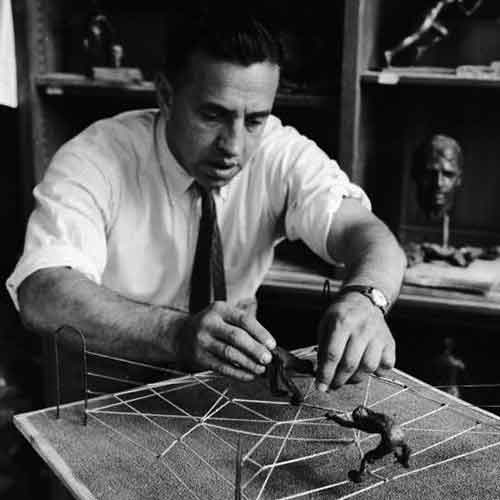
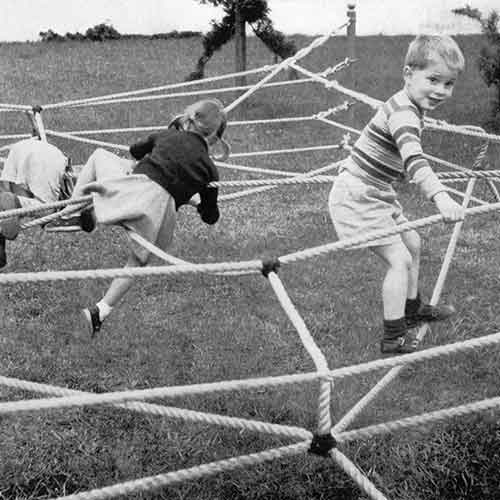
The invention of rope-based play is attributed to a 1930s former boxer by the name of Joseph Brown.
Born in 1909, the son of Russian immigrants in Philadelphia, Joe attended Temple University where he studied physical education; however, he left the university to become a professional boxer. Joe returned to complete his studies in 1931 after suffering an injury. He then spent six years as a sculptor before being hired to train boxers at Princeton University.
Joe recognized that movement through sport and play was important for the development of young people. He turned his attention to play equipment for the first time in 1950. Many experts believe his designs to have been revolutionary. He developed what he termed play communities, which drew attention for their play function.
Joe installed a number of prototypes in Philadelphia and outside the United States; however, there was no mass production of his designs since he did not have the manufacturing capacity. The inability to mass produce stalled the concept in the ‘50s and ‘60s from taking off.
Joe derived his play concept for rope play equipment from a classic boxing ring. He also created the first designs for today’s very popular high rope gardens. He attempted but failed to find a licensee so he implemented individual special projects instead.
In 1971, Berliner Seilfabrik, who manufactured steel cables for elevators, picked up the rope-based play concept. While Joe Brown started with a loose rope structure modeled after a boxing ring design, Berliner used one of the 5 Platonic solids, also called regular polyhedrons, to make the design very solid. Using this concept, Berliner designed and mass produced the first net climber, starting the whole rope-based play industry on a commercial basis.
What is rope?
In rope-based play equipment, ‘rope’ as used for commercial play equipment refers to a galvanized steel cable wrapped in a polyester yarn. Steel cable was invented in the 1830s, and the first net structures developed for playful climbing equipment were created in Germany in the early 1970s. Rope used for net play structures can be a broad range of diameters. Typically, most ropes in reach of hands have a course surface texture which provides an optimal grip.
Why Rope-Based Play Equipment?
On a daily basis, children need to develop social and cognitive skills along with fine and gross motor skills, and the playground offers an ideal
environment in which to do so. Rope-based play, those 3-dimensional spatial net structures, are more engaging and physically challenging for children than traditional play equipment for several reasons.
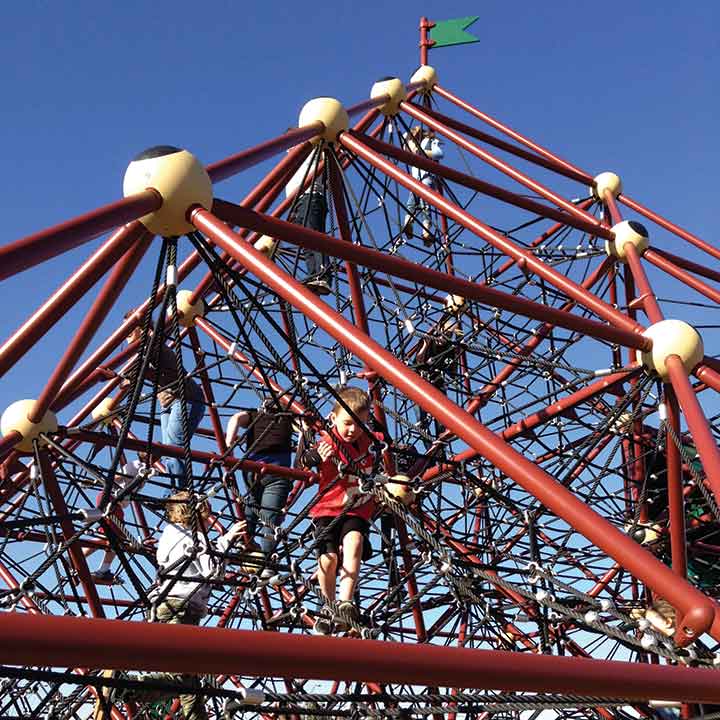
Material
One big difference between rope play structures and traditional is the material itself. A well-designed net structure is responsive, giving children an additional interaction with the material as the steel inside the ‘rope’ makes it behave differently. The net structure bounces back, engaging children on a different, more in-depth level than just climbing stairs and sliding down a slide.
Design
Rope play structures are a different design concept. Most traditional structures have specific entry and exit points (i.e., stairs in one area and a slide in another area). In addition, they tend to limit a child’s movement or how a child uses the structure. A 3-dimensional net climber gives children a structure that allows for open play – allowing the child to decide how to play on the equipment, which angle to enter or exit from, how to progress throughout the structure and more.
Endless Play Options
With the 3-dimensional design, the climbing and playing options are endless. Even if a child wanted to repeat the way he or she climbed the day before, he or she probably couldn’t. A child has to figure out each time how to get to the top or move from one corner to the other, making decisions on when to take the next step or which rope to grab.
Increased Socialization
Traditional play equipment tends to be wide-spread and closer to the ground. It separates children in their play behavior; for instance, one child may be using a slide while another is using a climbing component. The 3-dimensional net structures offer a more compact design without these same barriers separating the children. As they play, children can get close to each other allowing for social interaction and communication. Even if a child stops playing while on the structure, he or she can still sit and talk to the others on the structure.
Rope-based play structures bring children as well as adults together. Berliner products, like the Pegasus, are true multigenerational play structures. Because of its height, the Pegasus, while classified for ages 5 to 12, offers a large enough space inside the net for both children and adults, something not offered by many traditional playground solutions.
This interactive play keeps children engaged.
Today’s Trends with Rope-Based Play Equipment
Connecting Traditional and Non-Traditional Play
On the playground today, one of the trends you see is the idea of connecting traditional and non-traditional playground equipment. For instance, in the 3D rendering on the next page, one of the main elements on the playground is a rope-based structure connected physically using a bridge.
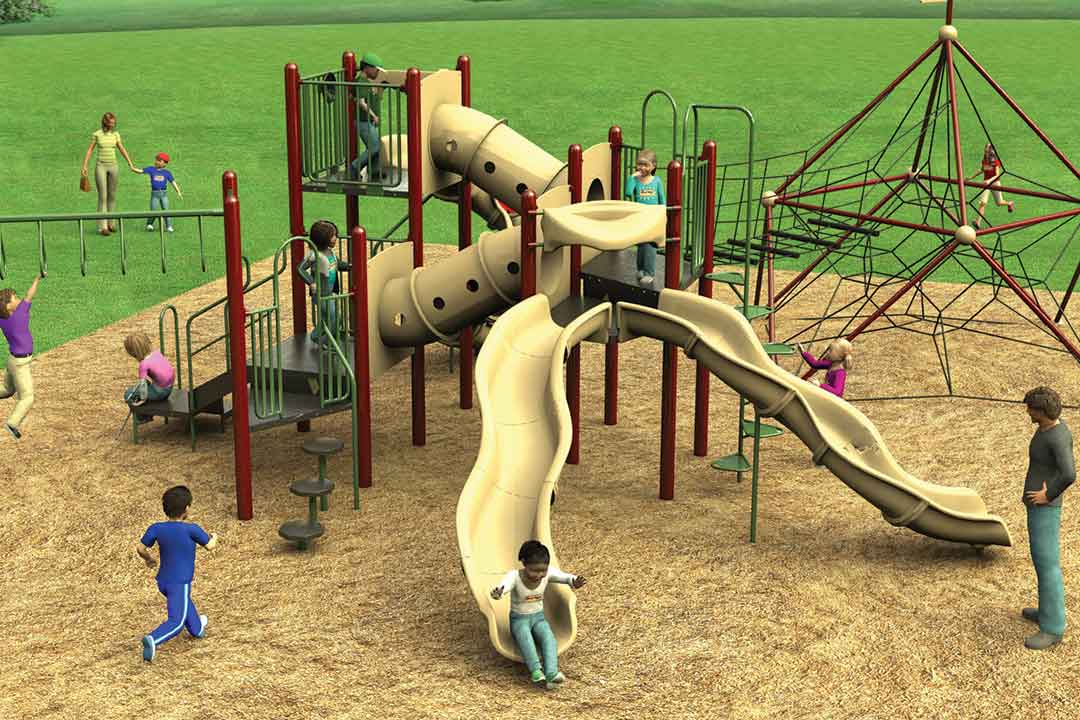
Rope-based structures can also be connected by play functionality, where the children jump from one stepping form to another, to reach the more traditional play structure.
This combination of traditional and non-traditional play equipment can often provide a community with the needed playground equipment familiarity combined with something new and exciting; a combination that offers kids more fun and more play value.
3-Dimensional vs. 2-Dimensional
Two-dimensional structures offer ‘paths’ for a child to climb vertically, horizontally, or possibly across on a bridge or ‘link.’ Although the 2-dimensional ropes add to the play experience, they can fall short of the benefits 3-dimensional structures provide.
Three-dimensional rope structures come in all shapes and sizes and are commonly referred to as ‘space nets’ and ‘net climbers.’ Structures can be quite tall, or closer to the ground and full of low course challenges, or a mix of both.
A properly designed, true 3-dimensional net climber encourages a sense of agility, achievement and power in a playful environment. There are no prescribed entry points. There are no specific paths to be followed as are found on more traditional and 2-dimensional rope play structures.
Children playing on a 3-dimensional structure are empowered to make decisions. The open environment encourages social interaction and more benefits, such as:
- psychomotor development
- sense of balance
- skills to react
- body strength
- sense of achievement
- self-confidence
The difference between 2-dimensional and 3-dimensional is a very important consideration when choosing your equipment.
Includes All Children, All Abilities
Rope structures can actually be more inclusive than what we refer to as a traditional inclusive playground. The degree of inclusivity is different when using rope-based play structures.
Most of the net structures are considered ground level components, meaning a child with a disability can enter or exit off the ground without the need for a ramp or transfer system because the structures are so close to the ground.
Net structures provide an experience, a play value for children with or without disabilities.
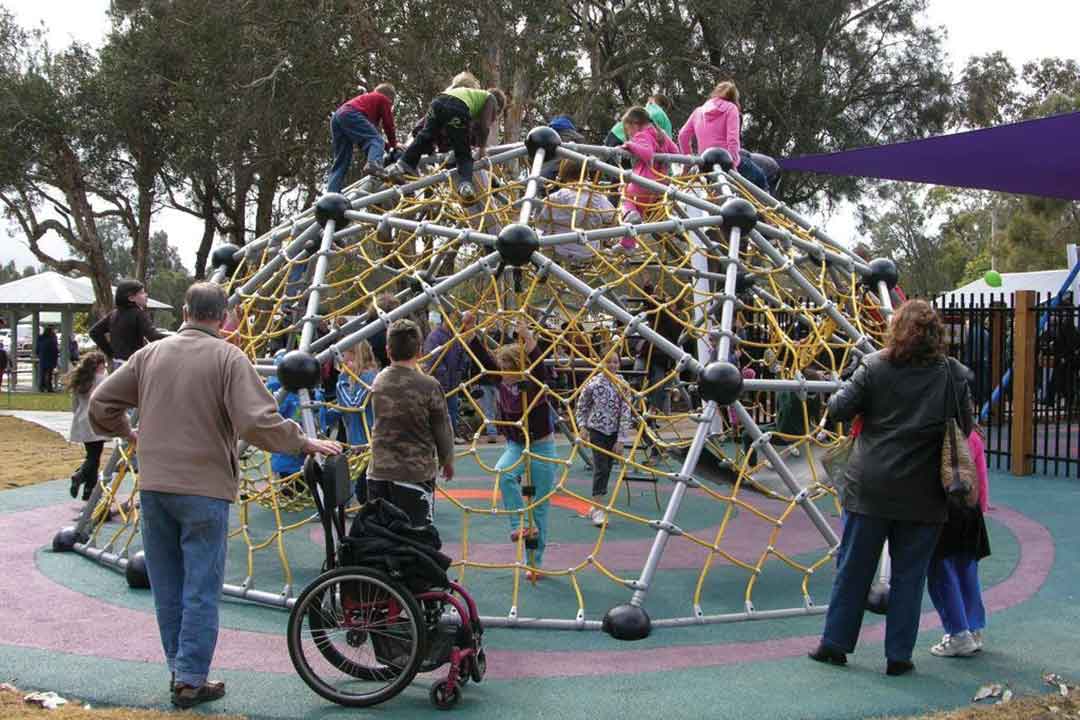
Many playgrounds include play structures that focus on children with disabilities only, neglecting over 90% of children who have no disability. It can be challenging to design a playground that includes everyone, one that has a certain degree of challenge and excitement in the product to keep all engaged.
Rope-based play equipment meets that challenge.
- Cognitive disabilities, which make up more than 50% of all disabilities, are served by designs like the net structures helping to develop critical thinking skills, such as decision-making and problem-solving.
- Children with sensory issues gain play value from the interaction of rope and the feel of its’ coarseness.
- Rope-based play enables children to play together without barriers, furthering the needs of those with social or communication disabilities.
- Incorporating hammocks into the design enables children with strong physical impairments the opportunity to participate in the action.
- Another strength of this type of equipment lies in the motor challenge that they pose. For instance, children with ADD or ADHD benefit from the need to concentrate on their movements. At the same time, they can burn off a lot of their overwhelming energy by using their whole body.
- Children with hearing impairments can move across the different levels while maintaining eye contact with the other children or their caregivers outside the equipment. The transparency of the rope playground equipment enables them to use sign language when playing and not feel obliged to speak to draw attention to themselves.
- Net structures provide a play space that brings together the different languages of the deaf and hearing, enabling them to experience their possibilities and their limits in common play, encourages understanding and acceptance of one another.
- For children with a visual impairment, a low rope climbing course in which the individual climbing elements are connected, or a play net, could mean a new play experience altogether. They can climb close to the ground or in a space secured by net mesh without fear, leading to experiment and mastering greater challenges.
- If a child with limited mobility does not have the strength to get on the structure, he or she at a minimum can hold the rope and feel its movement. There is no opportunity to do this with traditional play equipment.
And, children without any disability can experience all of this, too.
Innovations in Technology and Design
There are constant innovations in technology and design with rope-based play equipment.
Technological Innovations. For the first time in history, with the Joe Brown series of equipment, Berliner combined physical and mental benefits to a well-designed net climber using natural materials on the outside. On the inside, high end technology offers durable, easily maintained equipment.
Another of Berliner’s innovations includes a patented cloverleaf connection that allows the replacement of a single cable vs. the entire net structure, which can be done on-site making repairs much more cost effective.
Design Innovations Keep Children Safe. Height is often a concern on the playground, especially from a safety perspective yet we are seeing taller and taller structures. Rope-based play structures are designed to give a child a thrill, enticing them to come back and actively play on the structures but at the same time be very safe. Rope-based play structures are no riskier than other structures; in fact, all of Berliner structures installed over the past 45 years, even the 30’ tall ones, still have unchallenged safety records.
Availability and Affordability
Rope-based play has been around since the 1970s in Europe, particularly in Germany. In the U.S., it was seen to be more of a luxury item for prestigious locations. In 2008, Berliner established a U.S. headquarters positioning itself as a manufacturer of rope-based play equipment. This has led to improved customer support, increased distribution and lowered pricing. Rope-based play equipment is now a more affordable alternative for many schools, parks and cities with smaller, more limited budgets.
We also are seeing more rope on the playground as other manufacturers adopt the concept, more open playground designs are developed and the use of more deckless systems. Traditional manufacturers who used to do post and deck only are now mixing and matching traditional play equipment with rope-based play equipment.
Larger manufacturers are now also buying high quality products from Berliner Seilfabrik, a trend which has improved the perception of rope-based play equipment from a compliance, durability and safety perception. With these manufacturers promoting the concept more, it has generated a following and motivated more architects, landscape architects, park and school planners to consider specifying rope-base play.
The rope play equipment originally invented by Joe Brown remains as popular as ever, and continues to provide a lot of fun for children in playgrounds as well as having an educational effect.





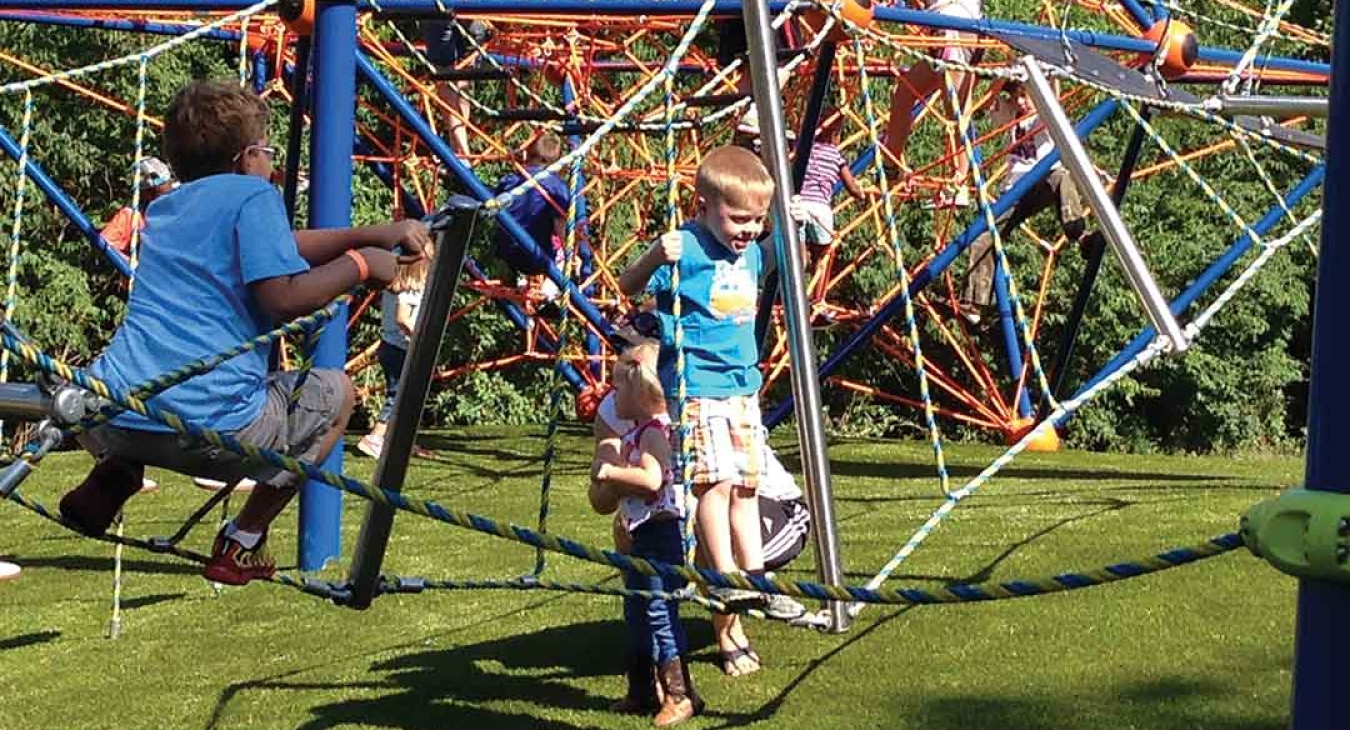
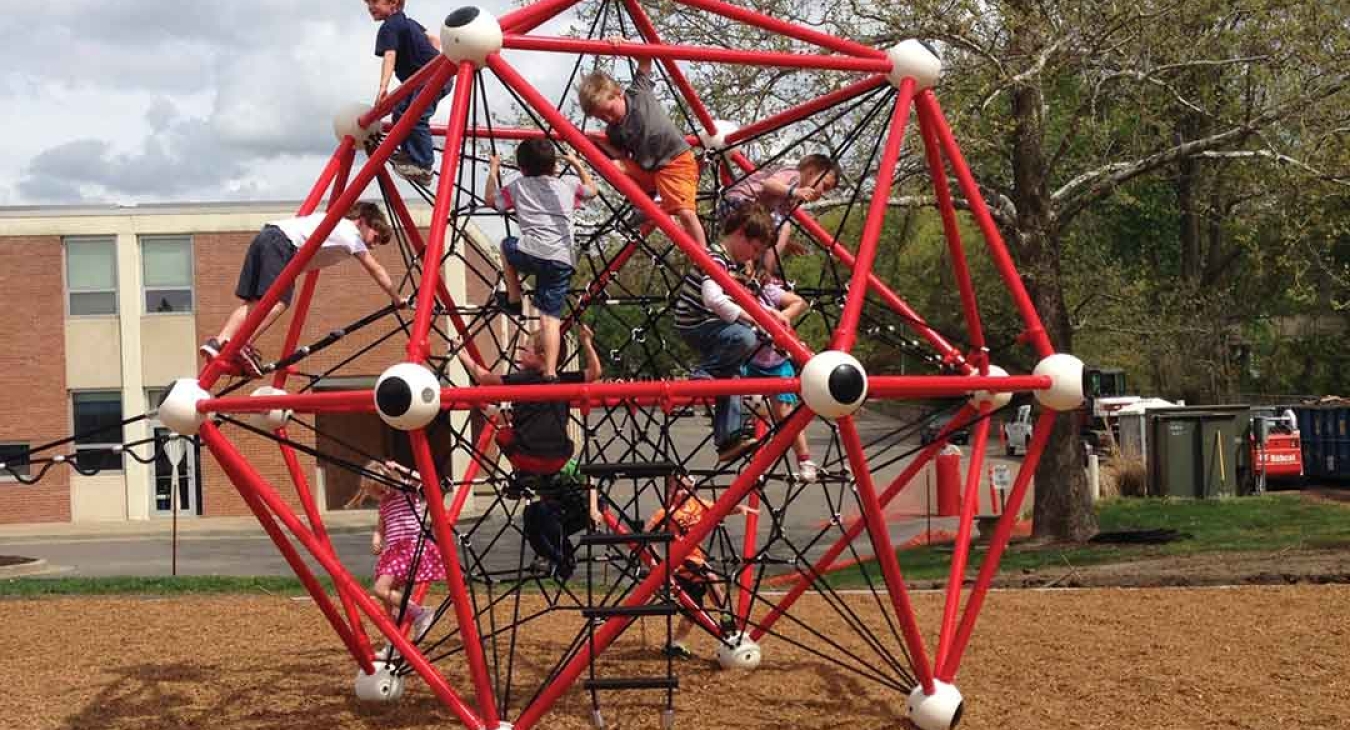
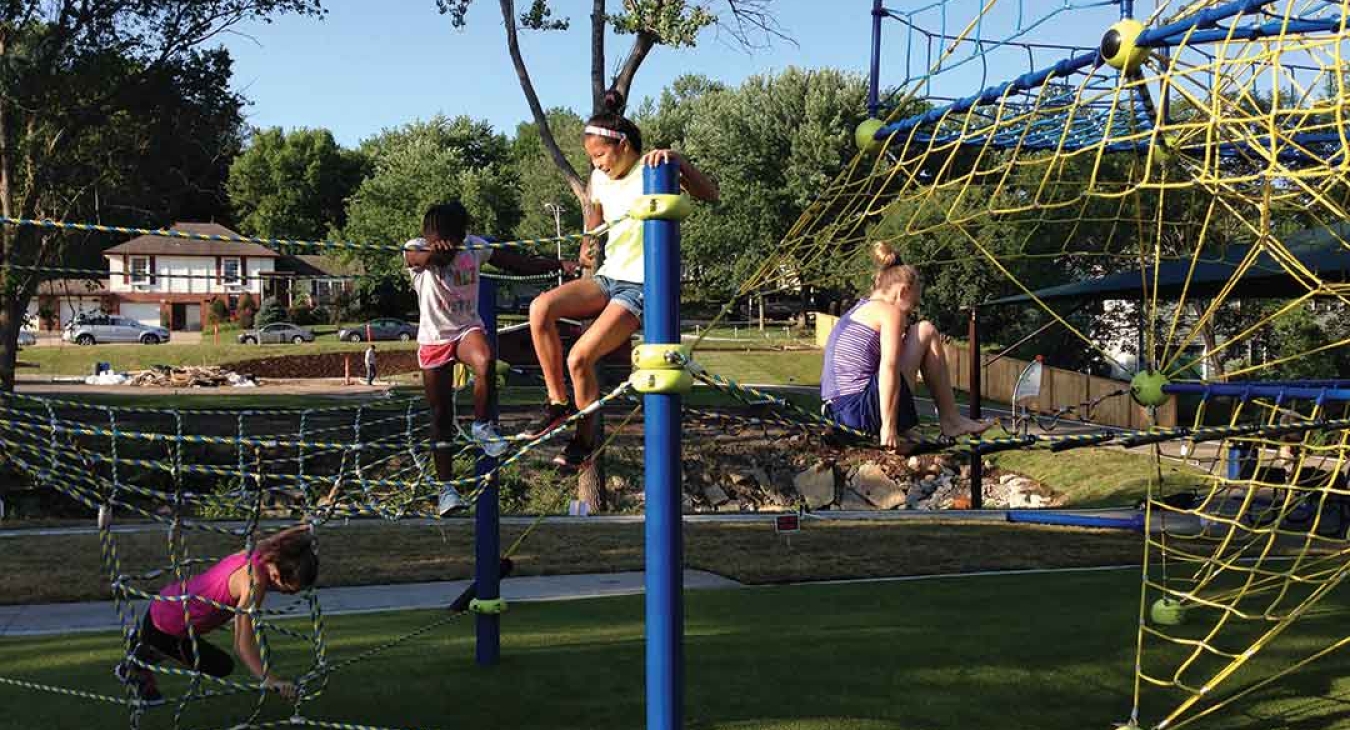
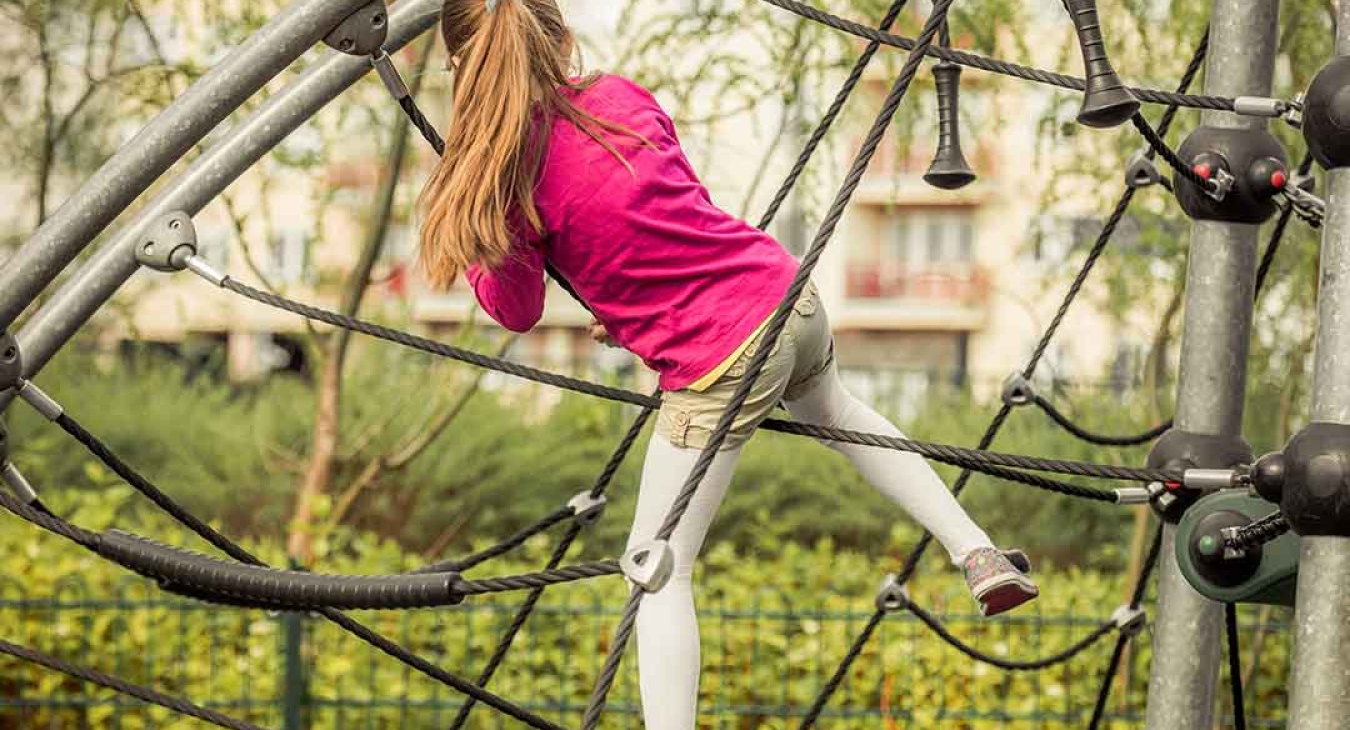
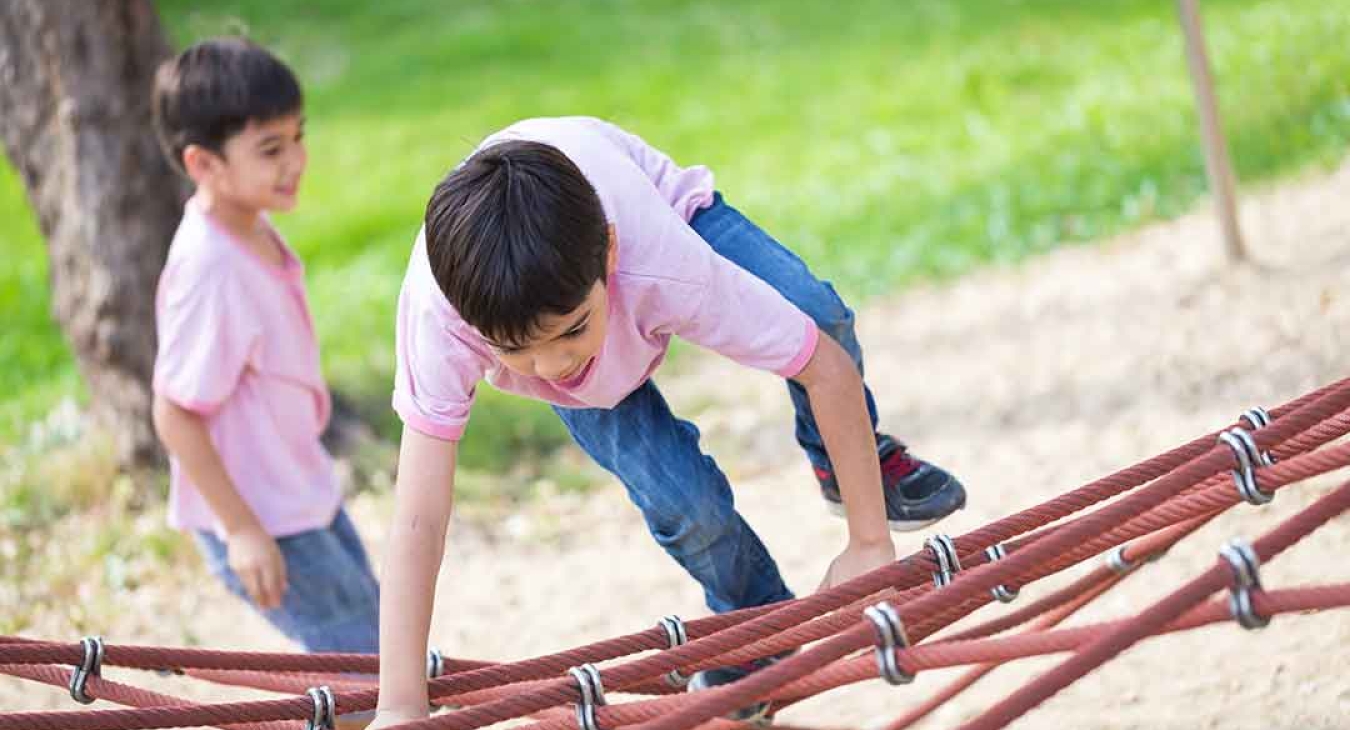

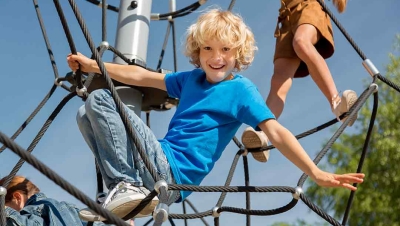
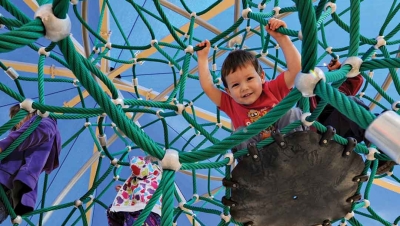








ROPE BASED STRUCTURE FOR SON WITH EPILEPSY! ANY AFFORDABLE HOME
Hello!!!
I am a mother of 2 boys in Berlin, Ma. Looking desperately for an afordabke rope based somewhat enclosed structure for 12 year old some with epilepsy and autism. Any insight would be soooooo welcome! Thanks for your time!
Jill Durand
Playground Directory
We have a playground directory on our website with companies that can help you.
In reply to ROPE BASED STRUCTURE FOR SON WITH EPILEPSY! ANY AFFORDABLE HOME by Jill durand (n… (not verified)
Purchasing Playground Equipment
Where do I go to purchase a Pegasus climbing apparatus?
Please reply to [email protected]
Add new comment